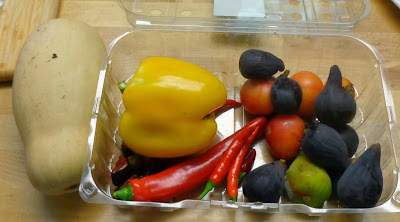 |
| Historic Bearded Iris Bed #2 |
I had grown marigolds and sweet alyssum from seeds, along the front and back edges. Those overgrew. Nice for a few months. Now with rains starting, they shaded the irises to much, and competed. So I pulled out the marigolds and sweet alyssum. I fed them to the hens. The hens seemed to like them. Those flowers, then, will be eaten second hand, as eggs and 4th hand, as composted chicken poop used for vegetable garden. Nothing goes to waste, if I can avoid it.
 |
| Bulbs for the Iris beds |
 |
| Iris Bed #3 |
I also planted some bulbs I think might be Camassia - not sure. I dug them up and left them sitting under a tree. Or they could be a big Allium. If they grow next year, I'll know.
I don't think these will compete much with the bearded irises. They will add color in later winter / early spring, when I need it. Before the irises bloom.
 |
| iris Bed #3 |
 |
| Pepper Based "Critter Ridder" |
I dug out one of the catnip plants, and moved it to the bee garden. Two or 3 others to go. Also the chives. The chives were much more vigorous than I expected. Both big and competing with the irises. I think the borage will only last until frost, too. Not sure.
Along the western edge, are scallions I planted from seeds, this spring. I think. They might be multiplier onions. I filled in, between them, with more multiplier onions. They will be pulled for cooking, this fall / winter / spring.
A few more plants to remove, then it will be all about the bearded irises, with a few other plants in between.
Then there's the mole problem.
Bearded Iris bed #3 has been troubled by mole digging for a couple of months. A few weeks ago I added "Critter Ridder" to the soil, and on top the soil. I thought that worked. But today there was a new mole hill. So I added more. "Critter Ridder" has a pungent, peppery smell, both black pepper and capsaicin pepper.
For the newest raised bed, I'm using 1/2 inch steel hardware cloth, instead of chicken wire, bottom. Maybe that will be better. Or maybe, the mole climbs over the side.
I don't know if it's the moles. Several of the iris rhizomes, planted at the soil surface, are now fully buried. I dug a few out and replanted higher. It's possible the rhizomes pull themselves deeper. Or the moles undermine them, and they sink.



























